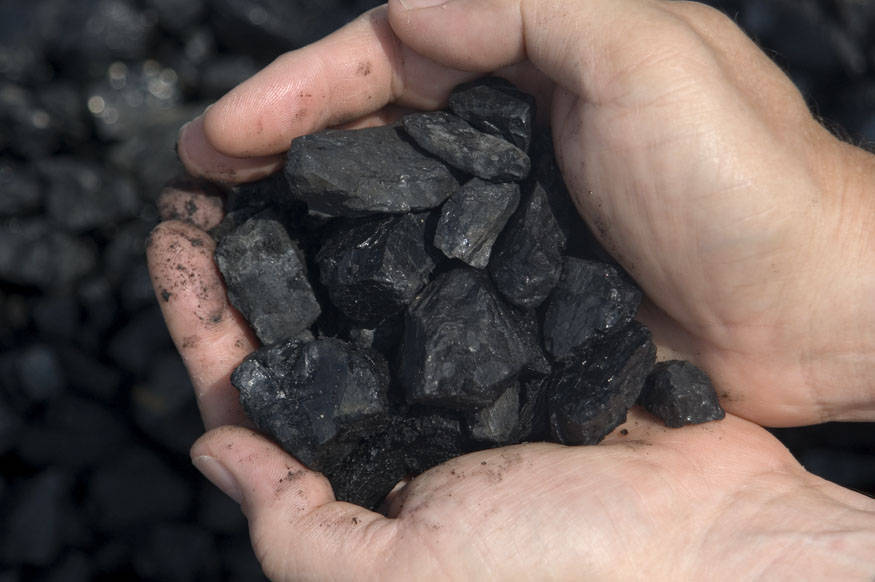In the recent past several columnist and experts have been critical of the recent decision of the Supreme Court to cancel allocation of 204 out of 218 coal blocks that had been allocated free of cost by the government for captive mining.
As economist Abheek Barua writes in a column in the Business Standard “I have had a flurry of calls (anguished monologues in most cases) and noticed copious Facebook posts from fund manager friends from abroad expressing their concern over the Supreme Court’s cancellation of coal-block allocations.”
Similar arguments saying that foreign investors are worried have been made by several others. As Raghuram Rajan and Luigi Zingales write in a different context in Saving Capitalism from the Capitalists “No one will have the incentive to undertake long term investment—whether in acquiring specialized skills or in building physical capital—when there is no clarity about what the rules of the game are.”
This is the core point of the argument being made against the Supreme Court decision on the coalgate scam. If we keep changing the rules of the game, foreign investors are not going to come, we are being told by the experts.
The question that none of these experts are answering is what should the Supreme Court have done, if not this? In its judgement the Supreme Court has said that the process of allotment of free coal blocks for captive mining through the Screening Committee route suffers from the “vice of arbitrariness”. The Comptroller and Auditor General (CAG) in its audit of the Screening Committee meetings had come to a similar conclusion. (To read a detailed argument click here).
Given this, the Screening Committee route of allotment of coal blocks was non-transparent and opaque. There were other problems with it as well. Keeping this scenario in mind, the Supreme Court decided to cancel the allocation of coal blocks through this route.
And as far as foreign investors are concerned wouldn’t they want a process of allocation which is transparent, non opaque and based on objective criteria? Again the experts criticizing the Coalgate decision fail to answer this question.
Further, if the Screening Committee route of allocation of coal blocks was such a great method why did it not lead to a significant increase in the production of coal. Again no answers are offered by the experts on this question.
As per the 11th five year plan, which started in 2007-08, the production from the captive coal blocks was to expected to touch 111 million tonnes of coal per year by 2011-12. The captive coal blocks produced 36.2 million tonnes of coal during the course of that year. By 2016-17, the production of coal from these blocks was expected to touch 330 million tonnes. In 2013-2014, these blocks produced 39 million tonnes.
So why have these blocks not gotten anywhere around to producing the amount of coal they were expected to? Only 40 out of the 218 coal blocks allocated are currently producing coal. Given that they had got blocks for free, the companies seemed to be in no hurry to start production. That wouldn’t have been the case, had they paid for it in the first place.
Further, captive coal-mining has not succeeded anywhere in the world. As Partha Bhattacharya, former chairman of Coal India, writes in a column in The Indian Express “Captive end-users mining coal is not optimal. Nor is it known to have succeeded elsewhere in the world. Coal-mining has its own challenges and needs core competence, which the end-users are unlikely to possess.” In the Indian case the expertise required to get a coal mine up and running is largely limited to individuals working for Coal India. There is very little private expertise that is available and can be tapped.
The other big problem with captive mining is that coal blocks need to be artificially divided in order to be allocated to different companies. As Bhattacharya writes “In the process [of artificially dividing blocks, a huge quantity of coal is left out for creating barriers, which otherwise could have been mined out.”
This is something that former coal secretary PC Parakh also talks about in his book Crusader or Conspirator—Coalgate and Other Truths: “Talibara II and Talibara III are sub-blocks of a contagious coal block that has no geographical or geological features warranting its division into two separate mines. This division was unscientific and was done many years ago when coal blocks were identified for allocation to private companies for private use…Such division of coal blocks leads to loss of sizeable quantity of coal at the barriers.”
Given these reasons Bhattacharya feels that blocks should “be merged to create larger blocks, separated by natural boundaries instead of coal barriers.”
Further, it is important that the government allows commercial mining of coal by companies other than Coal India. Given that expertise in India to set up and run a coal mine is limited it is important that we allow international companies to enter this sector. This will call for the amendment of the Coal Mines (Nationalization) Act of 1973.
Obviously this decision is likely to be opposed by political parties and trade unions. But it is worth remembering that Coal India now produces a major part of its coal through outsourced contracts. In fact, this is the major reason why the company has Rs 52,000 crore of cash on its books. And in that sense the sector has already been privatised. (For a detailed argument click here).
The first thing opening up of the sector will do is to create some competition for Coal India. The captive block route of coal production does not do that at all. The companies have to pass on the excess coal that they produce and which does not get used up in the production of power, steel, cement, aluminium etc., to the local subsidiary of Coal India.
Between financial year 2009-2010 and 2013-2014, the total amount of coal produced by Coal India went up at the minuscule rate of 1.7% per year from 431.3 million tonnes to 462.4 million tonnes.
Some competition is likely to improve the productivity of Coal India. As Swaminathan Aiyar writes in The Economic Times “In Australia, collieries produce 75 million tones per manshift (of eight hours) in open-cast mines and 40 tonnes per manshift in underground mines. Coal India averages barely 7 tonnes and 0.8 tonnes respectively…Coal India’s machines work 15 hours per day , against 22 hours per day in efficient mines.”
This is the major reason why the supply of coal in India has far outstripped its demand. If Coal India has to increase its productivity, some competition will do it no harm. As Bhattacharya puts it “Besides turning the current situation of acute coal shortage into one of abundance, competitive pressures are expected to bring prices well below the imported coal price, since the wage cost is likely to remain far lower in India than elsewhere, whereas productivity is expected to converge to international levels.”
In fact, if we had opened up commercial mining of coal in the 1990s, we wouldn’t have been suffering from the current shortage. As Parakh writes “Had we opened up coal mining to private sector for commercial mining, along with power sector, in the early 1990s, we would by now have at least half a dozen large coal mining companies in the private sector. This is what happened in the telecom sector. The country would not be facing huge shortage of coal and large outgo of foreign exchange on import of coal.”
To conclude, it is important that the sector be opened up for foreign companies as well, to keep India’s crony capitalists under check. As Rajan and Zingales put it “The most effective way to reduce the power of incumbents to affect legislation is to keep domestic markets open to international competition…Openness creates competitions from outsiders—outsiders that incumbents cannot control through political means.”
The article originally appeared on www.FirstBiz.com on Sep 30, 2014
(Vivek Kaul is the author of the Easy Money trilogy. He tweets @kaul_vivek)



